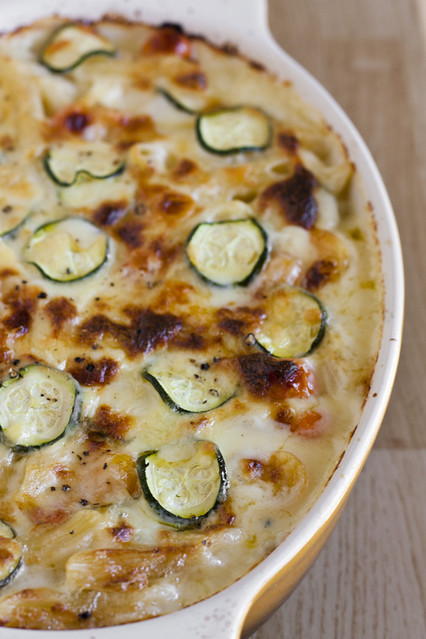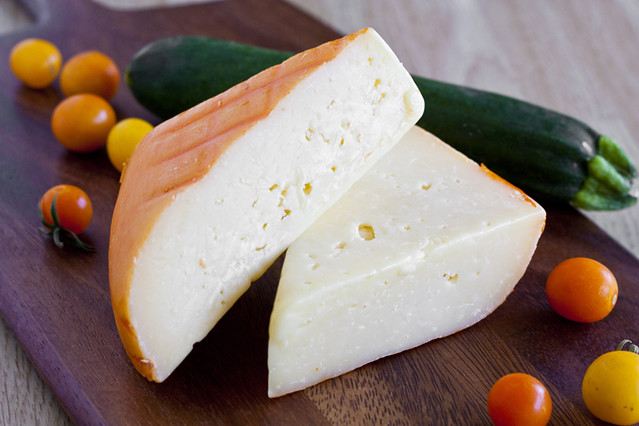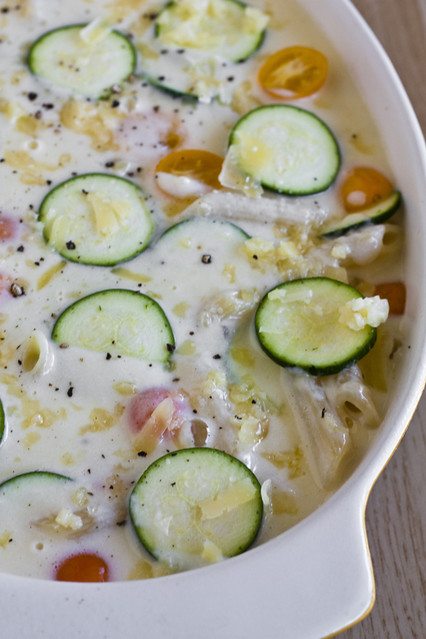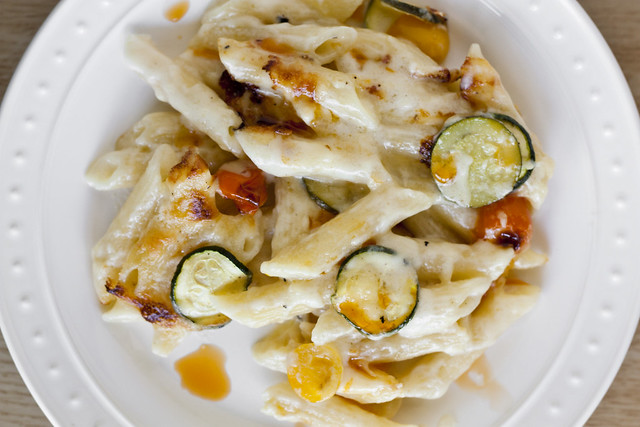-How can something so delicious be so divisive?-
“What is that you’re eating?” asked my coworker, Mai. Her hair was popped into a rough ponytail tied too high giving her head a slight pineapple appearance that may have looked silly on anyone else but, somehow, seemed to only further accentuate her demure Hmong features.
In fact, her figure was one of the great mysteries of life. During the course of the day I would watch her finish off an entire meal from McDonald’s, a few bags of chips, half a steer of beef jerky, and an extra large seafood pho that she would horrifyingly sweeten with six or seven sugar packets and made me wonder if she in fact had any sense of taste at all. All this and she would not gain an ounce. I eat a french fry knowing I’ll have to use my lunch break to take a healthy two mile walk in exchange.
Mai also ate a smorgaborg of Hmong food that she prepared herself or with her family the night before; finely minced and chili studded larb hotter than a California heat wave, pickled and roasted pig knuckles, face-scrunching bitter melon stuffed fat with pork and ginger, fermented cabbage redolent with the pungent odor of fish sauce, roasted chicken rubbed with lemongrass, soups filled with herbs and eggs.
-I'm horribly spoiled.-
Even better, in traditional Hmong fashion she always brought extra to work. Since most of our co-workers were unfamiliar with her food and, therefore, more often than not afraid of it I was usually the only person she was feeding. In exchange I brought her homemade pickles, jams, and breads. It was this alimentary connection that ensured we would become good friends early on.
The only thing she didn’t care for in our food exchanges was the copious amount of cheeses I brought in to snack on. Her face would wince as if she has just given herself a paper cut when she got a good smell of them. A particular run-in with a particularly ripe and oozy slab of Taleggio actually cleared her up and out of the room so fast she forgot all the files she had brought with her to my desk. When she finally reclaimed them she made a particular note how the pages now stunk like her husband’s old work shoes.
Today she looked at the offending piece of spoiled milk in my hand and gave me another paper cut wince. A particularly bad one as if she had sliced herself along the fingernail.
“It’s Piave," I said.
“It smells. How can you eat that?”
“Oh, come on. You’ve never even tried it. Plus, this has a mellow scent. It’s not a smell. It's an ah-row-MA!” I pulled out the last word like taffy in an effort to get her to really take in the cheese’s nutty, hay-like perfume in hopes she would deign to try a bit.
“I don’t like cheese,” she mewed.
“All cheese?”
“Well, there is a cheese I buy at the store that comes in a tube and –“
“STOP! No! Stop. That’s not cheese.” I said with only slightly exaggerated exasperation.
“It’s not?” she asked, her pineapple leaf spikes of hair bounced atop her head.
“No. That’s processed cheese-like product. There’s probably little dairy in there. More flour and thickeners than actual milk.”
“But I like it!” she said. She laughed as I sighed in defeat and popped the rest of the classic Italian cheese in my mouth.
-It's all rather frustrating.-
We had had this cheese argument before. She explained that Hmong families simply didn’t eat cheese. Ever. She also insisted a fact that I already knew – most Asian people don’t eat cheese.
Sure, I had known this but never understood it. How could so many diverse Asian cultures that preserve, pickle, salt, and ferment everything on earth not preserve milk? It was a certain question I had been pondering for a while now. My mom and I planned to eat our way through China and Tibet come this September and October and we were looking forward to the near-volcanic chili-laden dishes of Shanghai, the kebabs hawked by street vendors in Xi’an, the mutton stews of Lhasa, and the soup dumplings in Beijing. Furthermore, I was pining for the many fermented foods we would undoubtedly sample along the way and I was determined to pick up a few jars of everything for my pantry back home.
Yet, I realized that at likely no point along the way would I eat any cheese. Sure, there was a small chance in Tibet where there was a bit more influence from the more nomadic non-Han Chinese tribes and the presence of their legendary fresh-milk yak cheeses, but it was doubtful due to the fact that the Communist Party was tightly controlling our tour and exposure to tribal cultures was going to be somewhat limited.
Mai explained to me that most Asian people are somewhat lactose intolerant. (I don't have any statistics to prove this, but a lack of cheese in Han-Chinese cuisine and only five or six Artisan cheesemakers in all of China may help back me up.) I explained that this still didn’t really make much sense since many hard cheeses have extremely little lactose at all, hence why so many people who can’t eat dairy can still have some Parmesan shaved onto their salad. But, then again, if you know your body doesn’t like it in the first place then why experiment with it at all when so few people want it?
-The great food mysteries of history.-
A little more research and a bit of reading from Fuchsia Dunlop, renowned Chinese food expert, revealed to me a few other explanations. In one particular article where she chronicled an experiment where she brought over a variety of cheeses to some experienced Chinese chefs to taste she explained that many Chinese have little to no exposure to cheese in their lifetimes so few ever gain an appreciation for it. Rather, they nurture a fear of it.
Sure, some more adventurous eaters may dive in and find a taste for a few, the way some Western eaters find a love for a fish sauce and sugar slathered sour plums, but overall consumption of real cheese is relatively infrequent. (The consumption of massively processed cheese-like products, however, is not.)
Furthermore, there’s a historical stigma attached to cheese. Non-Han Chinese generally regarded milk foods as a uncouth aspect of the nomadic tribes in China. Dairy was uncivilized.
However, go west and you will indeed find some types of Chinese cheeses. Due to the influence of nomadic tribes the western regions of China like Tibet and Xinjiang have vastly different cultures and cuisines that westerners may not necessarily associate with what we see as traditional China. Foods encompass things like goat, yogurt, bananas, and barley. Hardly the stuff of a chili spiked hot pots or ginger steamed fish. Furthermore, as Western China shares borders with countries like Mongolia, India, Nepal, and Pakistan some crossover is bound to carry over. Hence, Chinese cheeses and a slew of other dishes such as Chinese-style curries.
-All of which I plan to try and eat within the next few weeks.-
In fact, one of my goals when I get to Lhasa is to try and get my hands on some chura loenpa, a fresh yak cheese similar to cottage cheese. But, like I’ve said, we’ll see how much time I’m allowed to be on my own in Tibet.
Yet, all that aside, I still can’t get Mai to try a tiny crumb of Piave. She complains that the taste is too oily, and that the flavor lingers too long in the mouth like a guest who doesn’t realize it’s time to leave.
Fine enough. I’ve turned down her fermented chilies drowning in dark soy sauce, fish sauce, and raw sugar. She insists it’s a revelation in flavor. Upon trying it I assure you it tastes like the bile from an overeager fire eater, though I have yet to go to the circus and confirm this with one.
Still, I have swayed Mai to eat cooked cheese. When the flavor are tempered and the fats are warmed it’s nearly impossible to resist really good cheese. Especially, an amazing macaroni and cheese dish.
This particular one uses a buttery young Mahon cheese, a Spanish classic. It's tossed with some peak-of-summer cherry tomatoes and zucchini to freshen it up and give it some zing. A quick drizzle of chili oil finishes it off and gives it a proper kick to cut through the béchamel sauce.
The result for Mai? Well, we still have to see. I think this dish has a great chance to sway her to the curdled path. However, if you have any other perfect cheese recipes that can persuade anyone please leave them in the comments section.
Mahon Mac & Cheese with Zucchini and Chili Oil
Serves 6
10 ounces penne
10 ounces young Mahon
1 cup of cherry tomatoes, halved
1/2 small zucchini, sliced thinly
2 tablespoons butter
2 tablespoons flour
2 cups whole milk
salt and pepper
chili oil
1. Grate the cheese and set aside. Preheat oven to 350F. Grease a large casserole dish and set aside.
2. Cook the pasta in some salted boiling water until al dente. Drain the pasta through a colander.
3. To prepare the béchamel place the butter in a medium sauce pan and melt over high heat on a stove top. Add the flour and stir with a wooden spoon for about thirty seconds until the flour just begins to take color and smell nutty. Add the milk. Decrease the heat to medium-high and stir until the sauce thickens. Add most of the Mahon (reserving a handful or so for topping) and the salt and pepper to taste and stir together until the cheese is melted.
4. Toss the pasta, zucchini, and tomatoes together in the casserole dish. Pour the béchamel over the pasta mixture. Top with the leftover Mahon and a few extra slices of zucchini. Sprinkle on the last of the Mahon cheese.
5. Bake for 25 minutes. Allow the dish to cool for five minutes before serving. Drizzle the top with a bit of chili oil and serve.















I'm always looking for a new way to sneak my many veggies into cheesy dishes like this. Good idea!
ReplyDeleteHave you tried pizza?--the gateway cheese food? With a bit of blue cheese on top or fontina, perhaps? (Fingers crossed!)
or perhaps just a simple grilled cheese sandwich? made w/ really good cheese and great bread on a cold rainy day that can be hard to beat .....
ReplyDeleteAmber: I don't think I've ever seen her eat Pizza. O.o
ReplyDeleteJastembo: Agreed. Still, this particular mac and cheese is pretty damn awesome (I've made it three times now, I should probably have a salad soon.)
It's so true. Most Asians just do not like or even understand the appeal of dairy. Growing up my parents never considered buying cheese (other than the kind that comes individually wrapped) for our family.
ReplyDeleteI think their attitude did change after we moved to Holland for a year abroad (my dad is a professor and did a sabbatical there). In Holland, my mom discovered fresh baked bread (previous to that, they only had Wonder bread of the supermarket generic equivalent in the house) and Gouda cheese.
They rarely eat cheese now, and avoid the strong and smelly cheeses that I favor, but if I were to offer them a slice of Gouda, I know they would light up and say "Just like Holland!"
That said, I bet you if I presented them your mac and cheese they would have a bite. You are so right that warm cooked cheese is nearly impossible to resist, no matter what culture you are from...
Irvin: Agreed. I feel your parents on the Wonder bread thing. That's all I had as a kid and then I discovered a bakery next door to my apartment in college. Can't go back after that. ;)
ReplyDeleteThere's a lot of good reasons for the lack of cheese making in Asian cultures, just like there's a relative dearth in most African cultures, as well, and it's got a lot to do with temperature and humidity. Some of these cultures do have butter and yogurt products, or very low-tech dried milk products that are reconstituted into beverages.
ReplyDeleteExcellent... I have grotesquely huge zucchini (can the word zucchini be plural?) that my freak farmer of a neighbor has foisted on me, I am tired of baking and freezing zucchini chocolate chip bread! Needs must, next recipe shall be mac and cheese with zucchini :) My roommate won't know what hit him. He will be sure I am trying to trick him again (like I did with the "chocolate bread") but I don't think he'll be able to resist the mac and cheese aspect of the dish :) Thanks Garrett!
ReplyDeleteOh, sweet Lord. I can't even fathom a cheese recipe better than this. I am going to use this to try and show my boyfriend the wonders of cherry tomatoes. This is probably the only way he'll eat them!
ReplyDeleteThis looks wonderful and I've got plenty of zucchini from my garden I'm trying to use up. Interesting about these Chinese not eating dairy. I know it is not part if their traditional cuisine but I thought perhaps they would have become more open to it.
ReplyDeleteJenn: Was not aware of this being the case in African cultures, but to call my knowledge of African cuisine sparse would be generous even.
ReplyDeleteDorothy & Jenn: You can hide anything under a mound of cheese, but in this dish they really compliment the cheese. Don't hide the veggies!
My son is Vietnamese (adopted) and we affectionately call him the milk man. He loves milk, cheese and any food that contains cheese. He adores ice cream. I know that culturally, he would not be eating cheese in such quantities, and I have many Asian friends who are astonished by how much cheese he consumes. So, even if lactose intolerance is genetic, and he is predisposed, somehow he missed that gene. Keep it coming with the news ways to make mac and cheese! I'll try this one for sure.
ReplyDeleteAda: Think of it this way - not a lot of European or American cultures these days preserve fish in too many ways. None make fish sauce and only some preserve various parts or types of fish. Eating tripe is almost unheard of, but in many Asian cuisines its normal. Heck, we treat guinea pigs as pets where many other cultures use them for food. Lots of factors influence how we eat and what we eat. This little post can barely hope to cover them all. ;)
ReplyDeleteE.N. Anderson wrote a great book on the history of food in China that I highly suggest picking up.
My aunt's husband is from Laos, and he wouldn't eat cheese for years after they got married. He'd pick up grasshoppers in the front yard and fry them in chili oil, but he said cheese was gross. She finally found a way to ease him into cheese love, though: risotto with ever-increasing amounts of Parmesan. After a while, he learned to like it. After even longer, he tried a risotto with goat cheese and Parmesan both. Then he had an Emmenthaler and asparagus sandwich. Now he even eats cheese fondue on occasion. As far as I know, though, my aunt has never returned the favor and tried chili-fried insects. I think it's hard for anyone to get over the food taboos our families teach us at a young age.
ReplyDeleteI am curious to know the source of popularity in asia, particularly japan and taiwan, of french and german style pastries rich in dairy butter and cream such as butter cakes and tuile cookies with cream fillings, baumkuchen, etc.
ReplyDeletePerhaps it truly is the fermented-ness of cheese? For example, most westerners love edamame but not even all Japanese like natto. Perhaps a mild flavored fresh cheese such as mozzarella or ricotta would be more palatable to your friend?
Now that we are coming to the downward slope of the summer harvest season, more pickle and preserves recipes please!!
ErikaLuke: I didn't consider that. I may have to pick up some of those for her and see how she likes it. Brilliant.
ReplyDeleteA beautiful story of learning and understanding the Asian food culture from a non-Asian foodie's point of view. Beautiful writing and, as always, great humor.
ReplyDeleteG-
ReplyDeleteI visit your blog regularly, you are hysterical and a wonderful writer.
You mentioned that your friend ate minced, chili studded larb -- could you please explain, what is larb?
ReplyDeleteblatherfrombrooklyn: http://en.wikipedia.org/wiki/Larb
ReplyDeletelarb (pronounced LA') is delicious.
now she's someone my friends can envy, too.
ReplyDeleteOH WOW!! This looks delicious. Just further confirmation why I think you'll have that added bonus of being a great cook for your kids someday! Adults and kids would love this. What's not to like about cheese? Thanks for another amazing recipe! :-)
ReplyDeleteI just discovered your blog and love this post! I'm now a new subscriber.
ReplyDeleteI had never really thought about the fact that dairy is not a part of Asian cooking. But beef is not as prevalent as it is here, either. Could it be that in Asian cultures they have never wanted to use the land to raise cows?
I lived in China for a few years. The meals are designed to be perfectly balanced. If you order well on your trip you won't miss cheese at all! I didn't have it once while there and never thought about it at all.
ReplyDeleteOne of my closest friends is Chinese & can't handle much cheese. I, on the other hand, adore cheese. We first bonded over food and continue to do so. Slowly, she's gotten more into it, thanks to me and my love of kanafe, which is a Arabic dessert with cheese, kataifi and orange blossom syrup. And her boyfriend's mac n cheese with mushrooms and bacon helped slowly convert her to a cheese tolerator as well. My friend loves desserts, and she can't turn down bacon either, so I say find a dish that suits your coworker's food loves.
ReplyDeletei love it .. sounds delicious .. i'll surely try it..
ReplyDeleteThe biologist must chime in. A generalization: virtually every human is born with the ability to tolerate lactose, but once weaned the gene that controls that ability is shut off. The exception seems to be those who descend from historically pastoral communities, such as Europe and Northern Africa. I also read once in my foodie reading that anti-lactose prejudice in Asian cultures also arose from the scent given off by dairy eaters that is pungent to those who do not imbibe in dairy- something about calling Europeans 'butter eaters' as an insult...wish this was fresher in my memory, but, alas, it is not.
ReplyDeleteHaving said that, the mac and cheese looks great. If she's a junk food lover, as you insinuate, I'd suggest some sort of over-the-top nachos dish- crunchy chips with an amazing cheese sauce, perhaps some pickled jalepenos and pulled beef or pork.
Having just moved to Beijing, I've noticed that, at least within the city, yogurt is a big deal here, their dairy section is pretty huge and filled with different types of yogurt, from gelatinous and sweet to thin and tart(like kefir). Also, there's a good amount of ice cream in the supermarket.
ReplyDeleteSo while certainly not everyone is adopting dairy, there's obviously a segment of the population that consumes it regularly. Granted, to afford to shop in the supermarket you have to be pretty wealthy (comparatively). And while we live in an area without many other non-asians, it is a wealthier area of the city.
OMG, what a great way to use Mahon. You've inspired me!
ReplyDeleteA big group of my friends are going to Japan next week. I'm going to send them this recipe... I know my wife and mom can't eat too much cheese. I don't think they could resist something like this.
ReplyDeleteVietnam is sort of the exception to the East Asian dislike for cheese and dairy products, primarily because of the French occupation. Soft cheeses and yogurt are super popular there, and among all segments of the population, as far as I could tell.
ReplyDeleteVietnam is sort of the exception the east Asian dislike of dairy, primarily because of the influence of the French occupation. Soft cheeses and yogurt are super popular there, among all segments of the population, as far as I could tell.
ReplyDelete